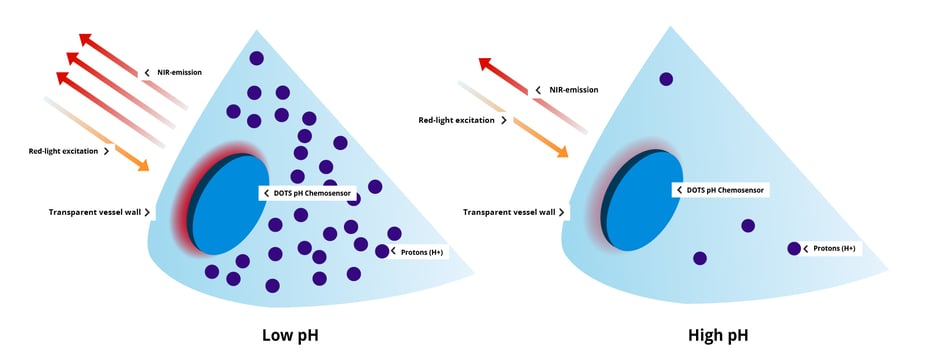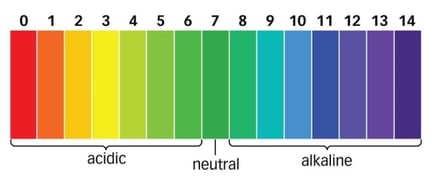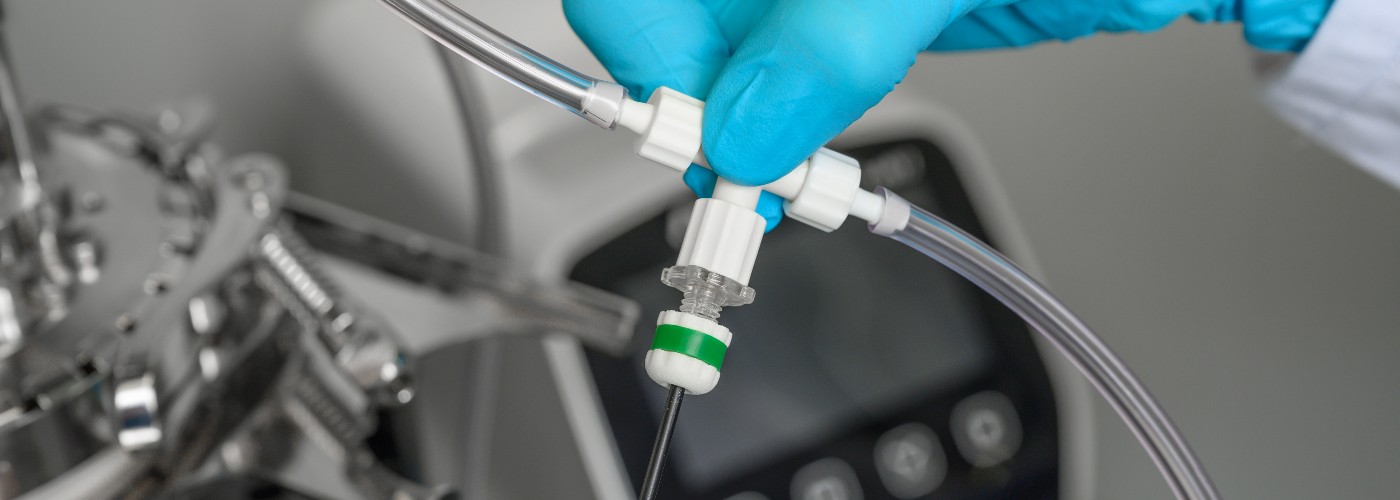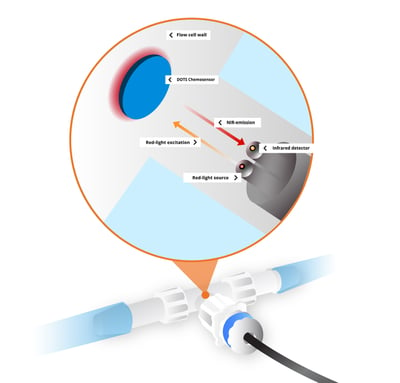Anyone who’s been involved in cell culture knows that maintaining proper pH is one of the most important elements in obtaining high-quality, reproducible results. While there are a number of ways to measure pH in cell culture, depending on your application, some means fit better than others.
What Is pH?
So first things first - a quick review. In more technical terms, pH stands for the "potential of hydrogen" and is the measurement of how acidic or basic (alkaline) a substance is. It's measured on a scale of 0 to 14, with 7 being neutral.
How Do We Measure pH In Cell Culture?
When we look at the different technologies available to measure pH in cell culture, they fall under one of two methods.
The most common method is electrochemical, in which a special pH-sensitive electrode will generate a voltage-dependent upon the pH value of that solution and is read by a millivoltmeter (often called a pH meter).
The second method, and the focus of this blog, is colorimetric, meaning that chemical compounds change color if the pH value of a solution falls within a certain range. That color change is then measured as a change in absorbance via a spectrophotometer.
While electrode-based pH meters are more familiar, the emergence of optical pH sensors has opened a whole new world of sensing abilities in bioprocessing.

What Are Optical pH Sensors?
Optical pH chemosensors are made up of many different thin layers sandwiched together. The uppermost layer of the optical sensor, the layer that comes in contact with cells, holds both a pH insensitive reference indicator and a pH sensitive luminescent indicator suspended in a matrix.
While each layer is critical for one reason or another, be it structural or adhesive, it is the hydrophilic layer that holds the immobilized dye that is arguably the most important.
An external sensor device sends a signal through the cell culture vessel, bouncing it off the chemosensor inside. The difference in the strength of the return signal is all the information the external sensor needs to measure the pH.
How Do Optical pH Sensors Work?
The external sensor emits a red light (at a wavelength of 610-630 nm). Both indicators are excited with this sinusoidally modulated red light and show bright luminescence in the near-infrared region (NIR, 760-790 nm). At higher pH values, the solution is considered basic, the pH indicator is de-protonated and its luminescence is quenched so only the NIR emission of the reference indicator is measured. As the pH decreases, the solution becomes more acidic, the indicator becomes more protonated, and the emissions of both indicators are detected. The external sensor measures this phase shift, which is then used to calculate pH.

Advantages
LOW MAINTENANCE
The optical chemosensor spot is the only part of the sensing system that comes in contact with cells or media and they are designed to be single-use, affordable, and disposable.
NO NEED FOR CALIBRATION
High quality optical pH sensors come factory-calibrated and do not necessarily need to be adjusted before use. This limits any possible down-time during experiments related to device calibration.
MINIMALLY-INVASIVE
Small, low profile sensor spots effectively become part of the cell culture vessel. Because they are so small, chemosensors do not disrupt the flow of media in the way exhibited by traditional probe style sensors.
REDUCED INTERFERENCE
The red light excitation of the indicators significantly reduces interferences caused by autofluorescence and also reduces stress on the biological systems.
PERICELLULAR SENSING
The small nature of optical sensor spots allows for measurements at the most important place in cell culture: Where the cells are actually located. The discrete location of the sensor allows for highly localized readings.
CONTINUOUS MEASUREMENTS
External sensor devices can measure every second, producing high resolution data.
|
Disadvantages
SENSOR SPOT SENSITIVITY
Optical sensor spots are small, delicate, and must be handled with care. Exposure to high concentrations of alcohol or certain organic compounds can cause damage.
NEW TECHNOLOGY
Despite having been discovered more than 20 years ago, optical sensor technology is still relatively new to the market and many users are not familiar with how it works.
LIMITED RANGE
Optical pH sensors currently on the market have a limited pH range. For this reason, most companies have designed multiple sensor spots with a variety of ranges. The most common is pH 6 to 8 for cell culture in the mammalian physiological range.
|
What’s the best application for optical pH sensors?
For small-scale cell culture work, optical sensors are proving to be one of the best options for pH measurement. They provide minimally-invasive measurements of pH at the pericellular level. The small size of optical sensors (< 0.33 mm) allows them to effectively become part of the cell culture device.
Without a doubt, cells are the most important element of cell culture, and it only makes sense that measuring pH should be happening where the cells are. Since cells tend to adhere to the bottom or sides of the vessel, that is the optimal place for pH monitoring.




